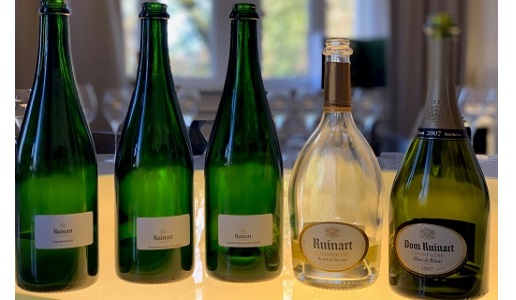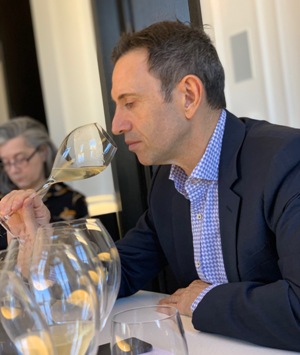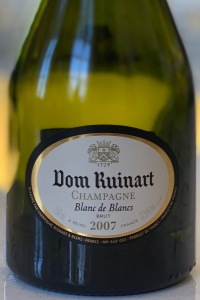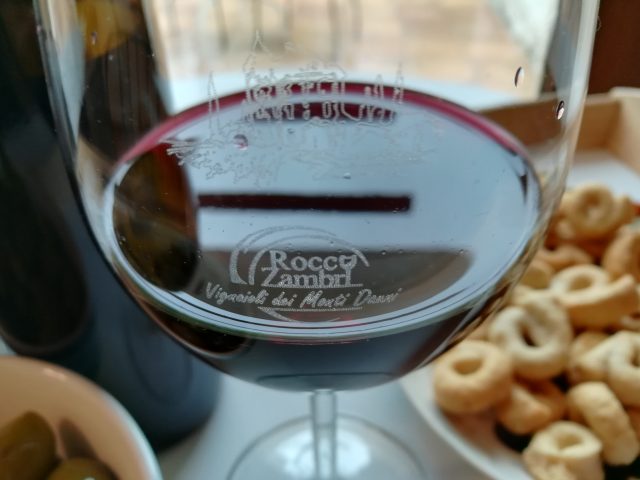Dom Ruinart 2007: History and the present

A synthesis of the Chardonnay from the Grand Cru villages of Côte des Blancs and Montagne de Reims, one distinguished by its citrusy finesse and elegance, the other by its structured, almost austere fullness.
In 1729, Nicolas Ruinart was one of the many businessmen in the textile trade in Reins, buying and selling cloths from Flanders to Provence along with silk from Lyon and prestigious Italian cloths. However, his passion for wine led him to engage in a new adventure and he bought his first vineyards in Sillery from which he began to produce Champagne. After only a few years, he decided to dedicate himself full-time to this activity and Ruinart became the oldest Maison de Champagne. His portrait still hangs in the Maison’s entrance hall along with that of his son Claude who, in 1764, bought more land which at that was situated outside the city limits. It was a bold choice dictated by a single factor: below ground there was a treasure constituted by 24 caves carved out of the chalk substrata and connected by 8km of tunnels.
Almost three centuries later, Maison Ruinart still has its production and offices where the dream began for one of the greatest Champagne families. In 1824, Charles X, the last king to rule over Champagne, granted Jean François Irénée Ruinart the noble title of Vicomte de Brimon, a reference of the town where the family owned some vineyards. In the 1830, one of his sons, Edmond, decided to visit Russia and America to expand the Maison’s market, evidence of his networking life style and the Maison’s market strategy. His grandson André Ruinart is considered responsible for Ruinart’s subsequent success and is still today considered the pioneer of the Maison’s marketing strategy, having been the one who commissioned Alfonse Mucha in 1896 to design the celebrated advertising poster of a woman hold a glass of Champagne, a move that consolidated the Maison’s ties with art.
 Reims was destroyed during World War I and the Maison, being less than 1km from the city, was badly damaged. André then died in 1918, leaving his English wife Charlotte a widow. It was she who rebuilt the Maison and its vineyards, like many other Champagne widows. Despite the 1929 Depression and World War II, she managed the Maison until her grandson Bertrand Mure could take over. Bertrand took charge in 1947 and brought the brand back to its success of the past. He did this by focusing on Chardonnay and adopting a style for the Maison that was summed up with the celebrated advertising slogan: “Je veux boire du Ruinart de neuf heures du matin jusqu'à neuf heures le lendemain” (I want to drink Ruinart from 9 in the morning to 9 the next day).
Reims was destroyed during World War I and the Maison, being less than 1km from the city, was badly damaged. André then died in 1918, leaving his English wife Charlotte a widow. It was she who rebuilt the Maison and its vineyards, like many other Champagne widows. Despite the 1929 Depression and World War II, she managed the Maison until her grandson Bertrand Mure could take over. Bertrand took charge in 1947 and brought the brand back to its success of the past. He did this by focusing on Chardonnay and adopting a style for the Maison that was summed up with the celebrated advertising slogan: “Je veux boire du Ruinart de neuf heures du matin jusqu'à neuf heures le lendemain” (I want to drink Ruinart from 9 in the morning to 9 the next day).
This style still inspires the Maison’s production today, even if in 1963 it became part of the Moët & Chandon group. The Maison is currently run by the skilled and meticulous Chef des Caves Frédéric Panaïotis, who this year saw the debut of his first cuvée de prestige Dom Ruinart, which with vintage 2007 is now in its 25th edition. Although this may represent a special milestone for him, Frédéric has always maintained that it is the Maison’s style that is perpetuated over time. It was thus an honor, as well as an exceptional opportunity to learn, to sample this Champagne with him in a preview tasting.
The tasting began with a sampling of some 2018 vins clair, an exploration of the characteristics of the Chardonnay that Dom Ruinart intends to exalt, grapes from the Grand Cru villages of Côte des Blancs and Montagne de Reims. They are two faces of Chardonnay, one distinguished by citrusy finesse, mineral elegance and floral delicateness, the other by the structured, almost austere fullness of grapes from Sillery.
This Dom Ruinart expresses the 2007 Chardonnay harvest, one that rewarded those who had the audacity to choose the right time to harvest, opting to pick the grapes at the end of August and thus avoiding the disastrous rain that compromised the Pinot Noir harvest. The wine’s finesse and allure came thanks to the Maison’s chalk cellars, where the bottles sat for ten years at a depth of 38m and at a constant temperature and humidity level. This allowed Dom Ruinart’s bouquet to evolve a nutty, almost toasted complexity even if it never saw wood and was, in fact, gently vinified in reduction, something that preserved that freshness that has always distinguished this Champagne and made it unique.
 Dom Ruinart 2007
Dom Ruinart 2007
97/100 – € 180
Made from only Grand Cru Chardonnay, 75% from Côte des Blancs – between Chouilly, Le Mesnil, Oger and Avize – and 25% from northern Montage de Reims villages with eastern exposures, for the most part from Sillery. The grapes were harvested early, in August, and had an alcohol potential of 9.3 and acidity level of 8.6. The grapes were gently pressed and were fermented using a reductive style with malolactic fermentation in the Maison’s tradition.
The wine has a bouquet as luminous as these days of late winter, with the air steeped in expectation and an almost smoky veil titillating the notes of hawthorn flower, the citrus ones of lime and yuzu, Queen Claudia plum, fresh verbena leaves and green tea, with a hint of toasted pan brioche in the background. The mouthfeel is immediately chalky and at the same time solid and distinct, with many nuances and a very elegant, dynamic texture. Still a debutant with its surprising freshness but already comparable in rank and stature to the great French Chardonnay, once again representing a milestone on Maison Ruinart’s path.
“Bravò” Chef des Caves Frédéric Panaïotis, who claims he was helped by a beginner’s luck harvest, although we know that skill is what allows one to interpret a harvest and make a great Champagne.
Related Products
| Product | Producer | Date of publication | Author | Read | |
|---|---|---|---|---|---|

|
Dom Ruinart 2007
Champagne |
Ruinart | 03/08/19 | Chiara Giovoni |
Made from only Grand Cru Chardonnay, 75% from Côte des Blancs – between Chouilly, Le Mesnil, Oger and Avize – and 25% from northern Montage de Reims villages with eastern... Leggi tutto |

|
Ruinart
|
03/10/16 | Redazione |

 Italiano
Italiano








